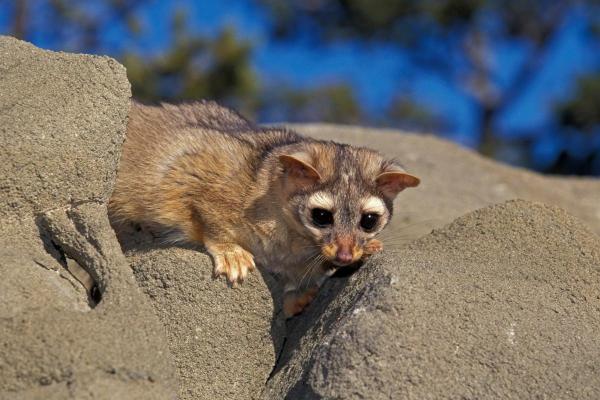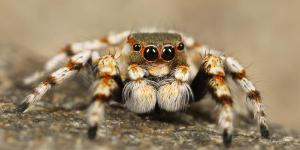Are Cacomistles Dangerous?


The cacomistle, also known as the ringtail, is a fascinating mammal native to Central and North America. Its name originates from the Aztec language, where it translates to "half-cat" or "mountain lion," depending on the source. They are easily recognizable by their raccoon-like face and bushy tails with black rings. Traditionally, cacomistles have been found in forested areas, but recent reports suggest they're becoming increasingly comfortable in urban environments.
This shift in habitat raises a natural question: Are cacomistles dangerous? This AnimalWised article delves into their behavior to find out.
What is a cacomixtle?
The cacomixtle, known scientifically as Bassariscus astutus, is a solitary, arboreal, and mainly nocturnal creature. They are native to Central and North America and, traditionally, were found in forested areas, particularly in rocky canyons and mountainous regions. They favor dense vegetation that provides them with shelter and hunting grounds.
These nocturnal creatures are skilled climbers, using their sharp claws and long tails to navigate trees and rocky outcrops with impressive agility. They are solitary animals, coming together only to breed.
The cacomistle possesses a unique appearance, that looks as different animals mixed together. Its facial features resemble a raccoon, with dark eyes and a pointed snout surrounded by a dark mask. The fur is typically grayish-brown, providing camouflage in its nocturnal environment. The most notable feature is its tail. Roughly equal in length to its body, the tail is bushy and adorned with distinct black rings. This tail functions as a counterweight, aiding the cacomistle's balance during its agile climbing maneuvers.
What do cacomixtles eat?
Cacomistles are opportunistic omnivores. Their diet consists primarily of insects, fruits, and small vertebrates like lizards and rodents. They are known to be particularly fond of honey and will raid beehives, earning them another nickname – the "honey bandit." This diverse diet makes them important players in their ecosystems.
By preying on insects and small animals, cacomistles help control populations that could otherwise harm plants and trees. They also contribute to seed dispersal by consuming fruits and spreading the seeds through their droppings.
Despite this, they are generally not aggressive towards humans and are unlikely to attack domestic animals due to their relatively small size. With increasing urbanization, cacomixtles may explore urban areas but usually prefer to avoid direct interaction with humans.

Are cacomistles aggressive towards people?
Cacomistles are predominantly solitary creatures, preferring to live and hunt alone outside the breeding season. Despite this, they do possess a surprisingly complex communication system. Loud calls, hisses, growls, and even a chattering sound are used to delineate territory, warn off potential threats, and attract mates.
Territory is crucial for cacomistles, and they fiercely defend their established ranges using scent glands located on their chests. These glands leave markings on branches and other surfaces, acting as a chemical message to other cacomistles. Interestingly, these territories don't overlap significantly, minimizing conflict between individuals.
Breeding is a seasonal affair for cacomistles, typically occurring in the spring or early summer. After a gestation period of around 50 days, a litter of one to four kits is born. The young are blind and helpless at birth, but they develop quickly. The mother provides them with sole care, remaining in the den for several weeks before venturing out for short foraging trips. The kits become progressively more independent over the next few months, eventually dispersing to establish their own territories.
Cacomistles can indeed display territorial behavior, which may lead to clashes with other individuals when territories are invaded. Pregnant females or those with young may exhibit aggression as a natural protective instinct if they perceive a threat to their offspring. However, it is important to note that cacomistles are generally not aggressive towards people.
Is it safe to approach a cacomistle?
Traditionally, cacomistles thrived in diverse natural habitats, ranging from montane rainforests and humid evergreen forests to drier secondary forests and scrublands. However, recent years have seen an interesting trend – cacomistles venturing into urban environments. This shift is likely driven by habitat loss due to deforestation, forcing them to adapt and seek new territories.
In urban areas, cacomistles may be spotted in backyards, on roofs, or exploring trees. While they pose no inherent threat to humans, their presence can sometimes lead to encounters with pets. Since cacomistles are opportunistic omnivores, it's important to supervise small pets outdoors to minimize potential conflicts.
These animals are generally shy and avoid contact with people. Their nocturnal nature further minimizes the chance of encountering them. They lack the aggressive tendencies of some wild animals and are unlikely to attack unless cornered or threatened.
Cacomistles are territorial, and their presence might lead to conflicts with domestic pets, particularly cats. These encounters can be stressful for both animals. To minimize such conflicts, it's important to secure outdoor pet enclosures and avoid leaving pet food outside overnight, as this can attract cacomistles.
As with any wild animal, cacomistles can carry potential zoonotic diseases like rabies and parasites. However, the risk of transmission is relatively low. Maintaining a healthy distance from wild animals, practicing good hygiene after any potential contact, and ensuring pets are up-to-date on vaccinations are the best preventative measures.
If you encounter a cacomistle in your yard, the best course of action is to leave it alone. It will likely retreat on its own.
Cacomistles are intelligent and adaptable creatures, and with a little understanding, humans can coexist peacefully alongside them in shared spaces. Just make sure to keep garbage cans tightly sealed and avoid leaving pet food outside overnight, as these can attract cacomistles searching for a meal.

Can the cacomistle be domesticated?
The growing presence of cacomistles in urban areas, with their distinctive facial markings resembling a raccoon and a cat, might raise the question of keeping them as pets. However, these mammals are wild animals with specific needs.
Cacomistles are nocturnal, driven by instincts to climb and explore vast territories. Replicating this extensive space and their nocturnal activity within a home is challenging. Additionally, their diet consists of a diverse range of insects, fruits, and small vertebrates. While commercially available pet food exists, it may not fully meet their nutritional requirements.
It's important to distinguish between taming and domestication. Taming simply involves an individual animal tolerating humans, but doesn't alter their inherent wild instincts. Confined to a domestic environment, cacomistles with untamed instincts may become stressed or frustrated, potentially leading to behavioral issues. Historical accounts of cacomistles kept as companions likely involved tamed individuals, not domesticated pets. Several alternatives exist to appreciate these creatures without compromising their well-being.
If seeking a pet for your home, consider adopting traditional domestic pets like cats and dogs. These species have been domesticated for generations, developing a strong bond with humans. With proper care, they can thrive in our homes and provide companionship.
Discover the rich history of animal domestication and the special bond between humans and dogs in this other article on domestication of dogs. This article explores the fascinating process that led to our canine companions, offering a wealth of information for those seeking a pet.
If you want to read similar articles to Are Cacomistles Dangerous?, we recommend you visit our Facts about the animal kingdom category.
- Lundrigan, B. and T. Zachariah. (2001). " Bassariscus sumichrasti ." Animal Diversity Web. Available at: https://animaldiversity.org/accounts/Bassariscus_sumichrasti/
- Medellín A. (2020). The reconquest of the cacomixtle. Available at: https://ciencia.unam.mx/leer/991/la-reconquista-del-cacomixtle
- Pino, J., Samudio Jr, R., González-Maya, JF & Schipper, J. (2020). Bassariscus sumichrasti (amended version of the 2016 assessment). IUCN Red List of Threatened Species 2020: e.T2613A166521324. https://dx.doi.org/10.2305/IUCN.UK.2020-1.RLTS.T2613A166521324.en







